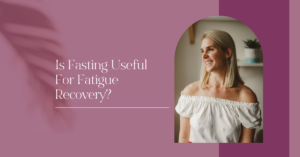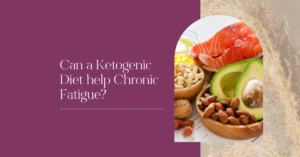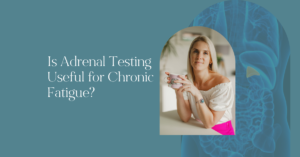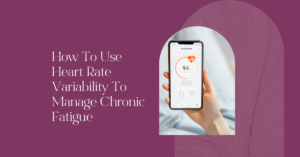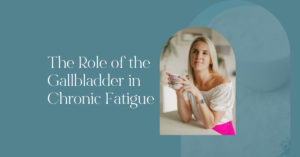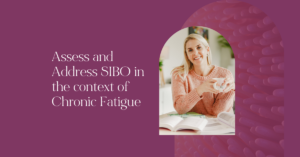SUPPORTING OESTROGEN DOMINANCE
Oestrogen dominance is not the only cause of hormonal symptoms, but it is very common in many hormone related conditions. To better balance oestrogen in the body you want to make sure you ovulate and produce adequate progesterone. This means you must consider the upstream factors that are involved in hormone production and the downstream factors that are involved in the clearance of oestrogen from the body.
All hormones must be cleared from the body as part of their natural biochemical lifecycle. Certain individuals may have genetic preferences for certain pathways which means that they may prefer certain methods of detoxification over others.
Our own endogenous hormones must also be transformed in the liver and prepared for excretion. An overloaded liver may be a factor in hormone imbalances which may manifest as oestrogen dominance.
There are 4 phases to oestrogen clearance
- Phase 1 Detoxification
- Intermediary Phase
- Phase 2 Detoxification
- Drainage via the bowels
Supporting Phase 1 Oestrogen Detoxification
In phase 1 detoxification, your body can convert estradiol to 2-OH, 4-OH and 16-OH oestrogen. Your body will always distribute a certain percentage of oestrogen across all three pathways. However, for best health outcomes, you want the majority of oestrogen to move through the 2-OH pathway.
Some women may have genetic polymorphisms which impact the enzymes that facilitate this conversion. If you are one of them, your body may need extra help to ensure that the majority of your oestrogen is converted down the correct pathway. When more oestrogen is processed via the 4-OH or 16-OH pathways, this can be more harmful for health.
The good news is that certain foods and supplements can facilitate good phase 1 detoxification. You can test your hormone metabolism using the Dutch Complete Hormones Urine Test and I have observed positive changes in my client’s pathways when taking these interventions.
The following foods support oestrogen metabolism and healthy hormonal pathways:
- Flaxseed
- Caffeine
- Rosemary
- Grapefruit
- Peppermint Oil
- Rosemary
- Wild Yam
- Cruciferous vegetables
- Oily fish
- Curcumin
- Ginger
- Maca Powder
- Green Tea
- Pomegranate
- Garlic
- Coriander
- Dill
- Mint
- Citrus
- Beetroot
- Onions
Certain foods, particularly those that contribute to inflammation, may negatively influence phase 1 detoxification of oestrogen. These include; omega 6 oils – typically found in confectionary, processed foods, take away and fried foods – excess sugar and processed carbohydrates, food that is blackened such as grilled, fried or barbecued meats and non-organic produce which increases exposure to pesticides.
With clients I find certain supplements useful, one in particular is Di-indolylmethane (DIM). This is one of the active components in brassica vegetables like broccoli, cauliflower, brussels sprouts and cabbage.
Supporting Phase 2 Detoxification of Oestrogen
In Phase 2 Detoxification your body will convert 2-OH, 4-OH and 16-OH oestrogens to water soluble 2, 4 or 16 Methoxyestrone which can then be excreted. This process relies on the function of an enzyme known as catechol-o-methyltransferase (COMT).
Certain individuals may have genetic variations which can make this enzyme more sluggish (I personally have one). This can cause a backup of the harmful intermediate compounds (intermediary stage), such as 4-OH and 16-OH oestrogen, which can be damaging to the body.
The good news is that you can support COMT to function better with nutrients such as magnesium, vitamin B, particularly B6, and amino acids such as N-Acetyl-Cysteine (NAC). Supporting stress and inflammation can also help this enzyme function better.
Drainage
Digestive health is an essential topic that must be considered and discussed for anyone who seeks better health. Because of its importance, it is also a very big topic and therefore beyond the scope of this post to cover in detail (you can always take my Digestive Health Mini Course for a deeper dive).
For the purpose of this module what you want to know is that detoxified oestrogen is excreted via your bowels. Therefore, you want to make sure that your bowel movements are regular. In the words of Dr Terry Wahls; “You want to be pooping snakes. Not rocks, not tea, not pudding but snakes on a daily basis”.
Many women tend towards constipation for various reasons:
- Lack of dietary fibre
- Thyroid dysfunction
- Stress
- Small Intestinal Bacterial Overgrowth (SIBO)
- Undereating
- Bacterial imbalance or Dysbiosis
- Medications
If you experience constipation then digestion should be the first priority when it comes to oestrogen clearance.
Another source of oestrogen is “myco-oestrogen” which comes from the colon through the activity of yeast overgrowth such as candida. Yeasts co-exist with bad bacteria in the intestines producing an enzyme called beta-glucuronidase. This enzyme interferes with the elimination of oestrogen through the liver. This is but another reason why poor gut health affects oestrogen levels indirectly.
A comprehensive stool test like the GI Effects by Genova Diagnostics can tell you if you have elevated beta-glucuronidase. If your beta-glucuronidase is elevated there are two things you may want to do:
- Get to the root of why? This could be a yeast overgrowth or dysbiosis generally
- You can supplement with Calcium-D-Glucarate which can inhibit beta-glucuronidase
- You can increase your consumption of glucaric acid, which is also found in many fruits and vegetables with the highest concentrations to be found in oranges, apples, grapefruit, and cruciferous vegetables.
What do you do now?
Now that you have a better understanding of the upstream influencers on hormone production, what do you do with all the information? Well, it’s quite a minefield and part of the challenge is knowing what is relevant to your case specifically and where to start. If you’d like help with your hormones specifically or your fatigue recovery generally, you can explore your options for working with me here.



